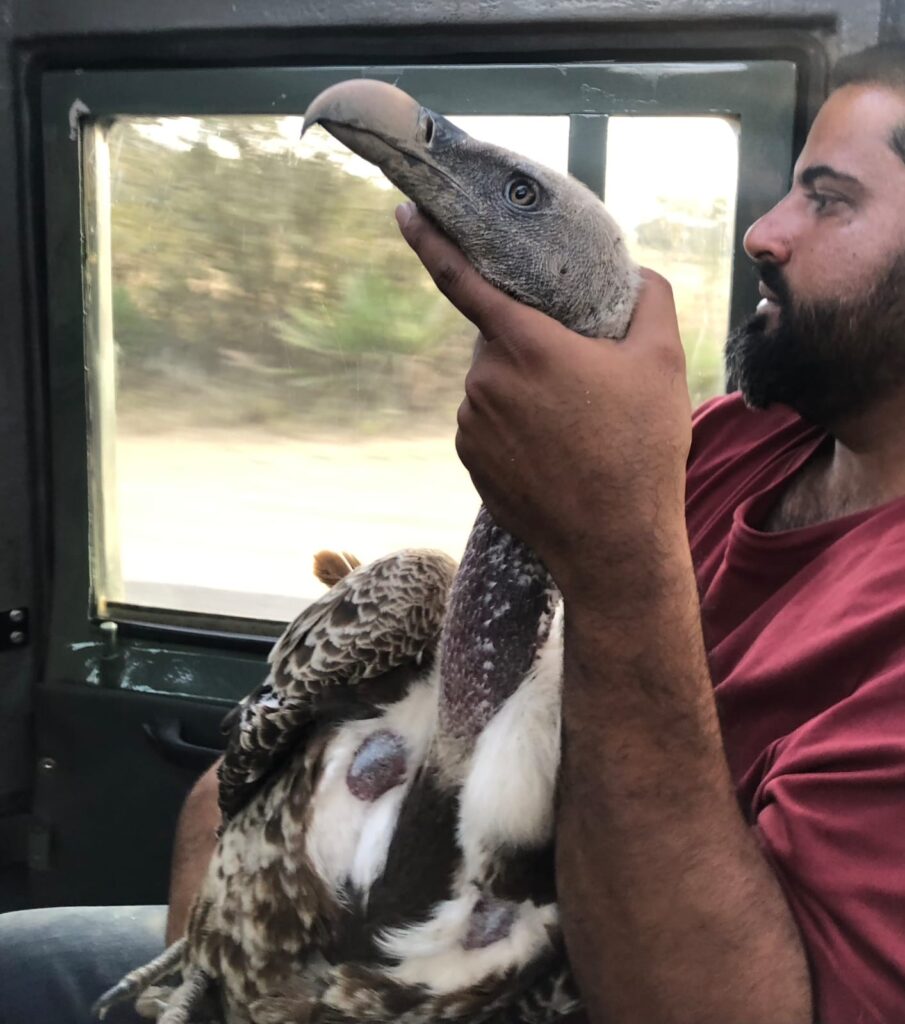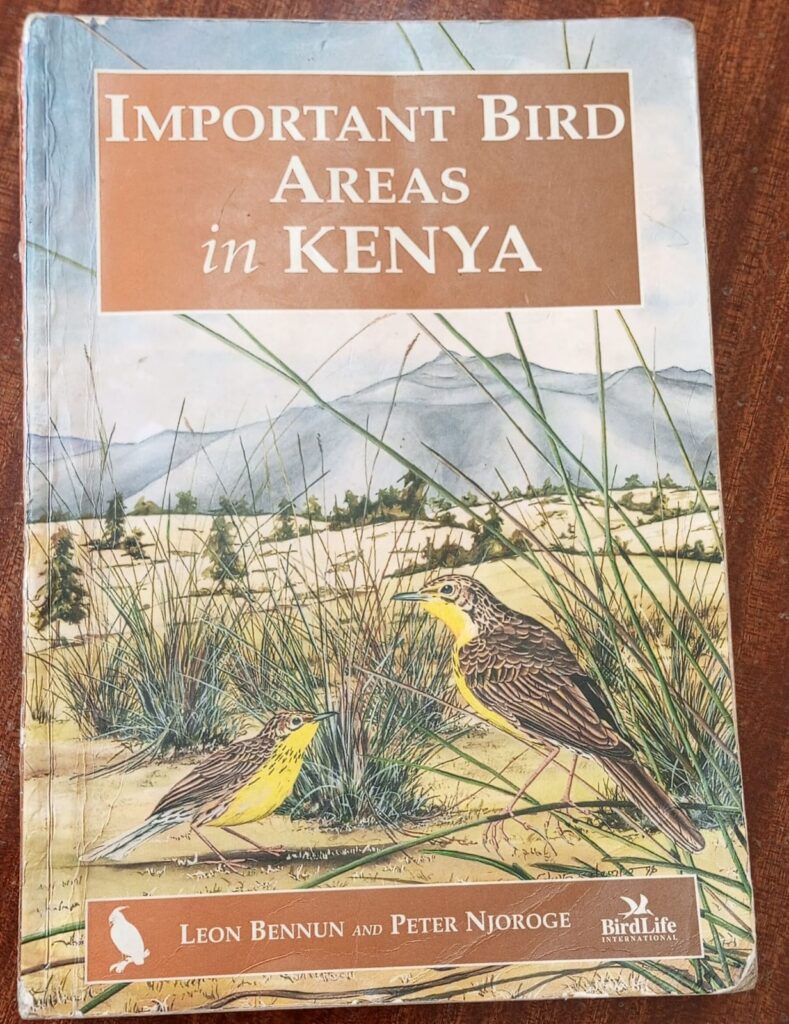By Bernard Muhia and Njoroge Waiganjo
Birds are categorized into different broad groups; perching birds such as sparrows; flightless birds such as ostriches; raptors such as eagles; seabirds such as gulls; and specialists such as flamingos.
Habitats
“Water is a key driver of distribution of wildlife and a key factor in human-wildlife conflict” says Joseph Edebe, a Senior Research Scientist at the Wildlife Research and Training Institute (WRTI) of the Kenya Wildlife Service (KWS) in Nakuru.
Our position at the equator and the varied ecosystems favour the country. We have marine birds along the coast, unique mountain bird species, savannah grasslands, arid and semi-arid lands, and inland water bodies like Lake Victoria. Kakamega forest, the last remnant of the Guineo-Congolian tropical rainforest in Kenya, has bird species that have relatives only found in the Democratic Republic of Congo (DRC). “In terms of bird species richness, Kakamega Forest is a jewel, it’s that precious!” Says Dr. Peter Njoroge, the head of the Ornithology Section at the National Museums of Kenya.
Lakes Naivasha, Nakuru, Bogoria and Baringo are important to birds and are Ramsar sites of international recognition. A Ramsar site is a wetland of high biodiversity. Migratory birds come to these lakes from September but most, like flamingos, come in January. They do this to escape the harsh winters in Europe and Asia.
Naivasha, which is in Nakuru County, Kenya, has a mosaic of different habitats that support a whole host of wildlife. On lake shores, you have fish eagles, migrant osprey and marsh harries. The several species of Kingfisher live in the papyrus and reeds and Sandpipers live on the shorelines. Cormorants live above the water on dead acacia trees. On savannas you get large eagles, augur buzzards, rodent eaters, and vultures. “Fish eagles are the only species thriving in Lake Naivasha. The lake has the highest density of fish eagles in Africa.” Says Shiv Kapila, the Director of the Naivasha Raptor Center, which is part of The Kenya Bird of Prey Trust.

Tourism
Raptor bird species are an attraction to enthusiast bird watching tourists, scholars and ornithologists which boosts tourism in the country. “So you’re trying to strike a balance between keeping these lakes as pristine landscapes, using them for tourism due to the biodiversity in them, fishing activities like in Naivasha, for agricultural irrigation and finally water abstraction for assisting in geothermal power generation.” Says Edebe
Threats
Key threats to birds include electrocution/collision with energy infrastructures, widespread incidental and accidental poisoning, encroachment into their habitats (through clearing of woodlands and forests for charcoal and firewood, and large-scale conversion of land for agriculture especially riparian lands), hunting of the animals they depend on for food, poaching; and other factors accelerated by climate change which causes impacts associated with habitat degradation/loss. (Kenya National Biodiversity Strategy Action Plan, KNBSAP, 2019)
Population trends are declining, especially for flamingos in Lake Nakuru. A flamingo is a complex bird. It breeds in Lake Natron in Tanzania and feeds in Kenya in Lake Magadi, Lake Baringo, Lake Bogoria, Lake Elementaita and Lake Nakuru.
They are being threatened in Tanzania where a big soda ash company is being formed which will interfere with the breeding for flamingos.
There is also another concern in the development of wind energy because places that are good for wind power are good for soaring birds. Migratory birds which come in, follow certain routes mainly dictated by topography. “Birds have evolved to be very cost-efficient in the way they fly and they don’t want to spend a lot of energy. So they will take advantage of wind trails and thermals to ride the wind” says Dr. Njoroge. These are sometimes the same areas that wind farms are put up so you find birds colliding with the turbines. One example is the Kwenia colony in Kajiado where the Kipeto Wind Power Plant is located. They however shut down the turbines for birds to fly past.
Climate Change
The consequences of climate change in Kenya are many, but majorly: intense droughts, flooding, water and food insecurity, declining biodiversity and an increase in diseases; are seen as the main effects. “Kenya being an agricultural and nature-based tourism destination, climate change is really being felt.” Says John Kioli, a member of the Kenya Climate Change Council and the Executive Director at Green Africa Foundation and the Chairperson of the Kenya Climate Change Working Group. He helped draft the Climate Change Act of 2016 and other policies in the counties.
For the past 10-15 years, climate change has brought about higher rainfall, affecting the salinity of the lakes. The increasing water levels in Lakes Nakuru, Bogoria and Elementaita leads to the lakes having lower concentrations of algae which means there is a lower amount of food for the flamingos. Normal alkalinity is 10.5ph which means it’s highly alkaline and is optimum for the growth of algae for the flamingos. “Scientists have recorded down to 9ph which isn’t suitable for algae to grow which the lesser flamingo feeds on.” Says Edebe.
Consequences
Man greedily interfering with nature is causing an imbalance and species, especially bird species, are running down their extinction clocks at a very fast rate. If humans interfere with wild ecosystems, there are consequences to be paid. We are at the backend of a three year COVID-19 pandemic that was caused by improper use of wildlife products and wildlife itself. In India, vulture populations declined severely and as a result, there was an increase in cases of health problems at local dispensaries for diseases like anthrax which are controlled by vultures.

Solutions
There is a lot that conservationists are doing. For example in the 1990s, Dr. Njoroge produced a book called Important Bird Areas. It was a list of areas in Kenya where the threats are at the top of the list where funding and conservation should focus on. Organizations like Nature Kenya have used that book to advance conservation of birds and biodiversity in Kenya. As a result, they have managed to halt or reverse the decline of some species. One example is the Sharpe’s Longclaw, an endemic species to Kenya.
The Kinangop Plateau is one of its favourite grasslands which is also where farmers wanted to cultivate and plant potatoes. The habitat kept on being destroyed, however, conservationists came up with a solution for farmers to rear sheep instead of planting potatoes. Sheep cohabits well with the Sharpe’s Longclaw, since the grasslands do not need to be cleared.
The Environmental Management and Coordination Act (EMCA, 1999) provides for environmental impact assessments which ensure that development doesn’t happen in areas rich in biodiversity or that will have a detrimental effect on ecosystems.
The high pressure of a growing population in Nakuru is leading to pollution in the lake. The flamingos face a decline in the habitat for breeding, decline in food available, and also pollution. Birds are general indicators of the health of ecosystems.
“In terms of what we can do, creation of awareness is the first thing. If I don’t know whether cutting down a tree is going to affect me or my children, I’ll still cut down the tree.” Says Hilda Maina from Joujo Safaris. “We also have to create alternatives for people because I can’t tell you not to cut down a tree for charcoal and you don’t have any other means of making fire. We need to create alternatives for the products that are there.” She continues.
The UN Biodiversity Conference in Montreal COP15, passed a resolution to conserve 30% of the planet for biodiversity. “It is very important to protect all the biodiversity across the globe and there are these organizations, groups and movements that are doing the work on the ground and they should be supported.” Says Sumaiya Harunany, Founder of Blue Earth Organization in Mombasa.

Citizen science
“We’re finding communities more aware of the role they are supposed to play in conservation.” Says Dr. Njoroge. It’s an aspect of citizen science. An example is the monitoring of water birds in the Rift Valley lakes and the coast region where volunteers go out and count birds and feed that geo-tagged data into an app on their mobile phones. The Museum has developed relationships with the communities and this reduces the cost of acquiring this data.
“Before I do any conservation, I consult the community about the indigenous knowledge that they have regarding the issue. I then combine it with our scientific information and I involve the chairpersons of the community groups, and through that, we educate the community and there will be those willing to work with us. That approach works really well.” Says Jane Gathoni, a research assistant at the Kenya Marine and Fisheries Research Institute (KMFRI) in Gazi, Diani, Kwale County.
“The only way wetlands can be protected is if they are understood by the people living with the wetlands. This is the concept of citizen science where communities are monitoring and protecting their wetlands” Says Edebe.
Gathoni says that working in environmental conservation is not just about the ideas that we have, we also need to know what other people do in other parts of the world, in Africa and in East Africa. “You get to see how Tanzanians, South Africans etc are working on the same thing you are working on” she concludes.
This story was produced with the support of Internews’ Earth Journalism Network.
XXX END XXX
About the writers
Bernard Muhia is a journalist who has been certified on “Climate Adaptation in Africa” from the University of Cape Town, South Africa. He is an Internews’ Earth Journalism Network Grantee 2022. He is also a 10 Billion Strong Green Leaders Fellow 2022-23. He is a human and environmental rights defender.
Njoroge Waiganjo is a Projects Assistant Officer under Climate Change and Energy at Green Africa Foundation. He is, under the United Nations Institute on Economic Development and Planning, a Certified Young African Climate Change Negotiator.
